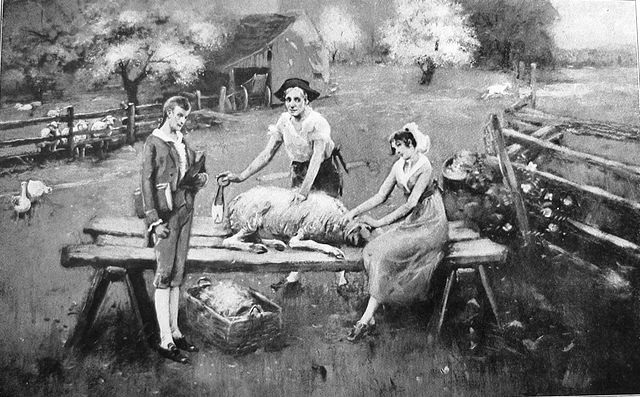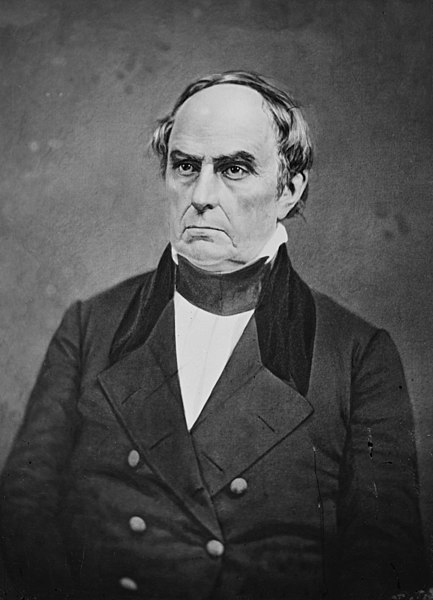Hugh Lawson White was a prominent American politician during the first third of the 19th century. After filling in several posts particularly in Tennessee's judiciary and state legislature since 1801, thereunder as a Tennessee Supreme Court justice, he was chosen to succeed former presidential candidate Andrew Jackson in the United States Senate in 1825. He became a member of the new Democratic Party, supporting Jackson's policies and his future presidential administration. However, he left the Democrats in 1836 and was a Whig candidate in that year's presidential election.
Hugh Lawson White
Lloyd Branson's "Sheep-shearing scene," showing Hugh Lawson White (left), his future father-in-law Samuel Carrick (middle), and future wife, Elizabeth
Portrait of White by Emanuel Leutze
White's pocket watch on display at the Center for East Tennessee History
Whig Party (United States)
The Whig Party was a political party that existed in the United States during the mid-19th century. Alongside the slightly larger Democratic Party, it was one of the two major parties in the United States between the late 1830s and the early 1850s as part of the Second Party System. Four presidents were affiliated with the Whig Party for at least part of their terms. Other prominent members of the Whig Party include Henry Clay, Daniel Webster, Rufus Choate, William Seward, John J. Crittenden, and John Quincy Adams. The Whig base of support was centered among entrepreneurs, professionals, planters, social reformers, devout Protestants, and the emerging urban middle class. It had much less backing from poor farmers and unskilled workers.
Henry Clay, a founder of the Whig Party in the 1830s and its 1844 presidential nominee
Daniel Webster, a leading Whig from New England
William Henry Harrison, a two-time presidential candidate who became the first Whig president in 1841 but died just one month into office
Zachary Taylor served in the Mexican–American War and later won the 1848 presidential election as the Whig nominee.








